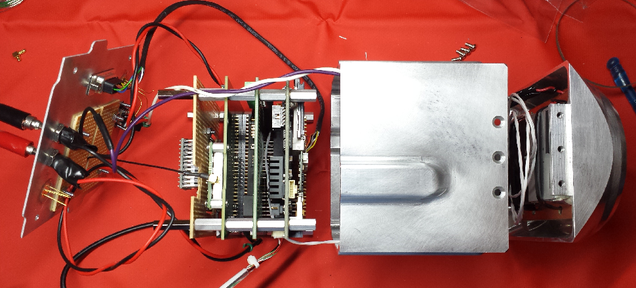
Right now, the cost of studying the atmosphere of a distant planet or moon is a multi-million dollar mission. But NASA is working to make space exploration way more affordable—using cheap, lightweight CubeSats.
The CubeSat, a spacecraft that is just 10cm by 10cm, has been enthusiastically adopted by citizen scientists, students, and budget-strapped researchers over the past few years. Even a high-end CubeSat with a sophisticatedsuite of sensors and communications gear usually costs just a few thousand dollars, and they can fly with everything from cameras to biology experiments.
In short, there’s a lot you can do with a CubeSat—as long as you only want to do it in low Earth orbit. Since CubeSats usually don’t have their own propulsion systems, launch vehicles have to drop them off between 160km and 2,000km above the Earth. And from the moment they arrive, their orbits begin to decay.
Jame Esper, a technologist at NASA’s Goddard Space Flight Center, is trying to change that.
The idea is pretty simple: Just add a module with propulsion and attitude control systems, so the CubeSat can move around once it’s in space. Add a shielding module to protect it from the heat of entering a planet’s atmosphere, too. NASA calls the project CAPE, or CubeSat Application for Planetary Entry Missions.
Esper and his team visualize launching CubeSat probes from spacecraft, then sending them out into the Solar System to study the atmospheres of targets like Jupiter or Saturn’s moon Titan. This would cost thousands of dollars, instead of the millions it usually costs to build and launch an interplanetary probe. Researchers could even drop a small fleet of CubeSats into Jupiter’s atmosphere to collect data from several locations. The the Micro-Reentry Capsule, or MIRCA, would shield the CubeSats as they plunged through the atmosphere, and their sensors would gather data and transmit back to Earth until the last moment.
CubeSats could even go beyond the solar system, by using small solar panels, or perhaps even a LightSail. In fact, there are lots of possibilities for propulsion. An interplanetary CubeSat could potentially use an ion propulsion systemlike the one that carried NASA’s Dawn spacecraft to Ceres, for instance, and several companies have been working on other tiny propulsion methods in recent years, following the growing interest in CubeSats.
So far, Esper hasn’t described these potential propulsion systems in much detail, but in a recent statement, he said that he hopes to find partners to work with on the CAPE service module after his team tests the micro re-entry capsule in a high-altitude balloon drop this summer. They’ll drop the module from a balloon 18.6 miles above Fort Sumner, New Mexico, and it will break the sound barrier on its way down to the desert floor. That drop will test MIRCA’s aerodynamic stability.
Next year, Esper and his team hope to test a CubeSat re-entry system by launching one from the International Space Station. If all goes well, these little devices could eventually be our vanguards to planets currently far beyond our reach.
Aucun commentaire:
Enregistrer un commentaire